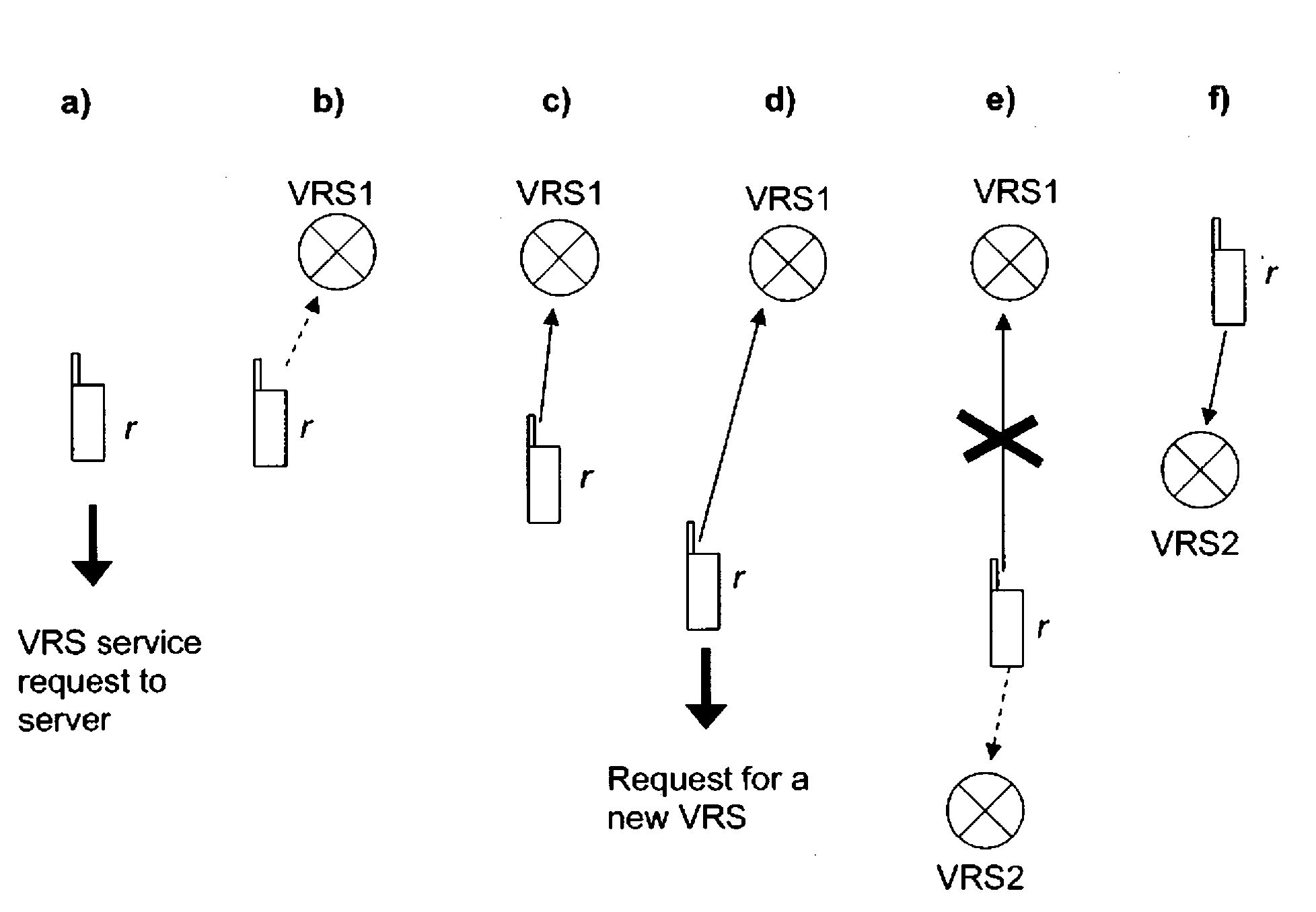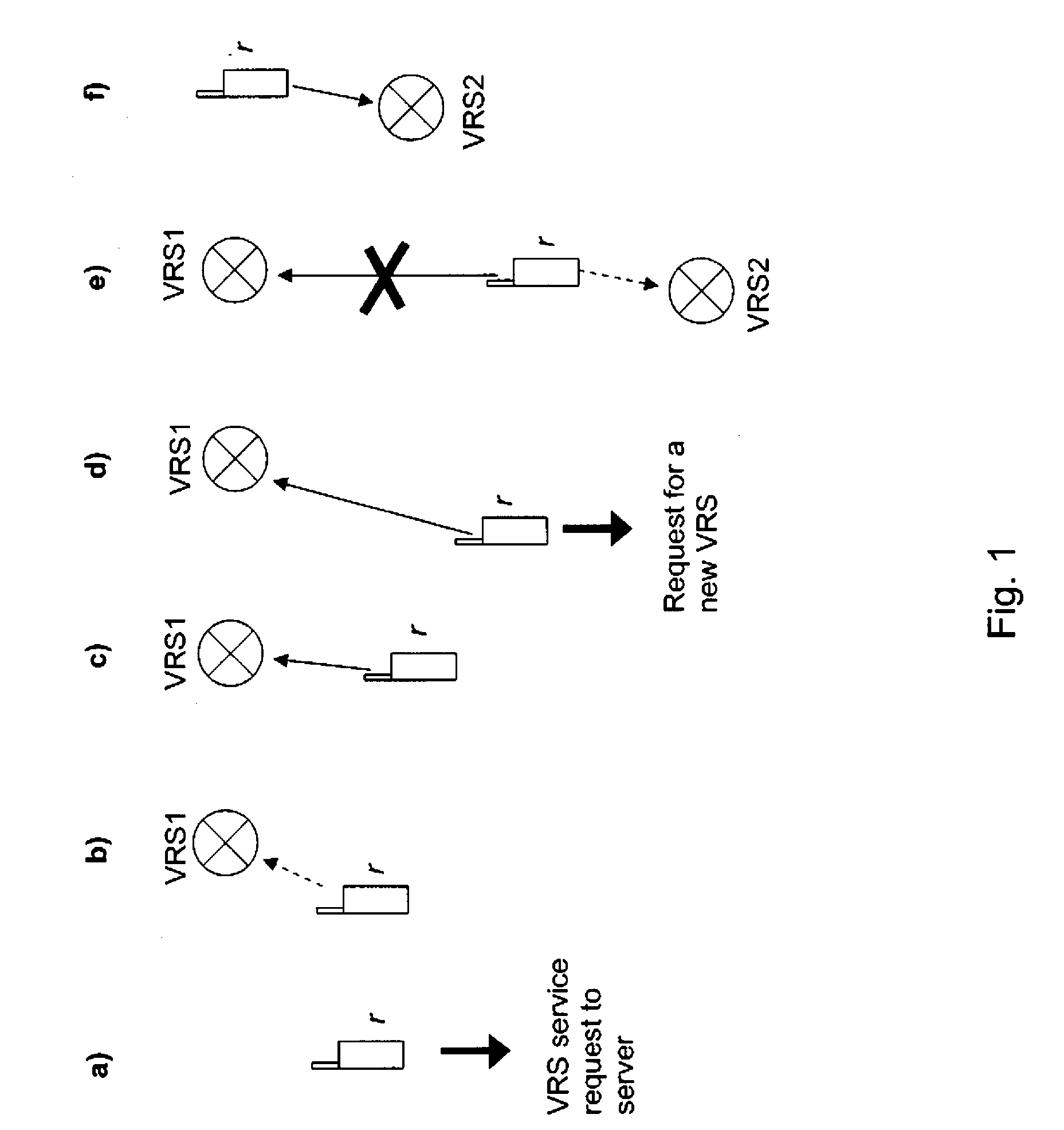Positioning using a reference station
- Summary
- Abstract
- Description
- Claims
- Application Information
AI Technical Summary
Benefits of technology
Problems solved by technology
Method used
Image
Examples
Embodiment Construction
[0054]FIGS. 1 and 2 schematically illustrate the difference between intermittent high accuracy navigation and continuous high-accuracy navigation in accordance with an embodiment of the invention.
[0055]In both cases, an assisted GNSS (AGNSS) enabled rover r wants to perform a high-precision navigation using carrier-phase measurements from a virtual reference station. The distance to the virtual reference station should be as short as possible to improve the reliability and speed of the baseline determination. If the distance increases significantly, a new virtual reference station should be generated and used. Baselines are indicated in both Figures as arrows pointing from a rover r to a virtual reference station.
[0056]FIG. 1 presents steps a) to f) of a first possible approach for changing from one virtual reference station to another.
[0057]For beginning a navigation session, the rover r sends a request for virtual reference station measurements to a server (step a). The request co...
PUM
 Login to View More
Login to View More Abstract
Description
Claims
Application Information
 Login to View More
Login to View More - R&D
- Intellectual Property
- Life Sciences
- Materials
- Tech Scout
- Unparalleled Data Quality
- Higher Quality Content
- 60% Fewer Hallucinations
Browse by: Latest US Patents, China's latest patents, Technical Efficacy Thesaurus, Application Domain, Technology Topic, Popular Technical Reports.
© 2025 PatSnap. All rights reserved.Legal|Privacy policy|Modern Slavery Act Transparency Statement|Sitemap|About US| Contact US: help@patsnap.com



